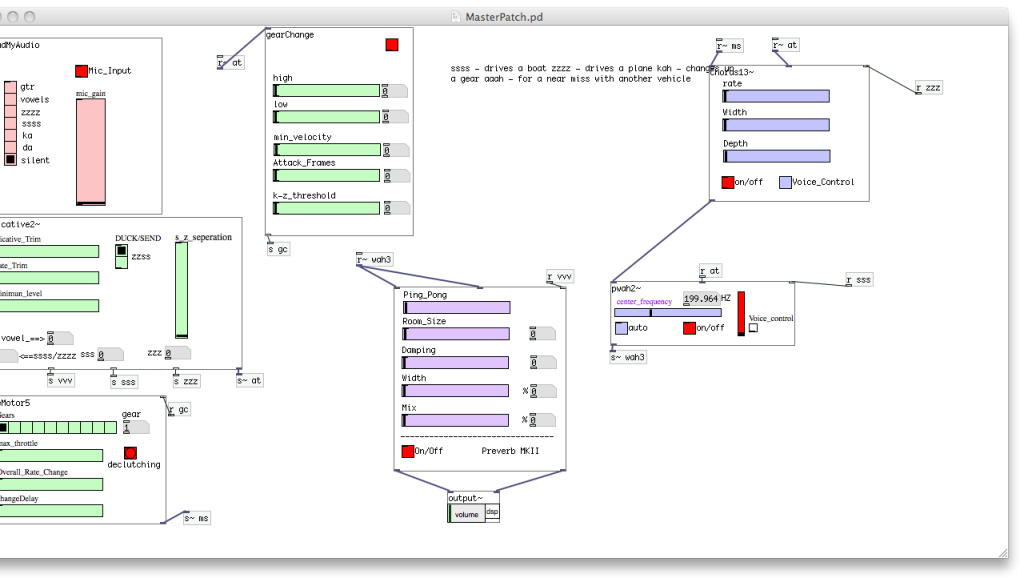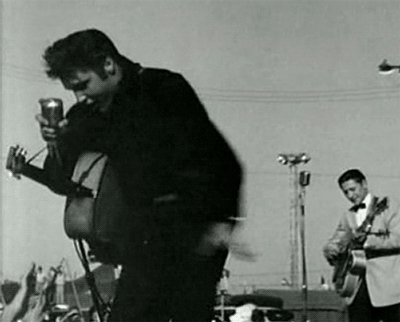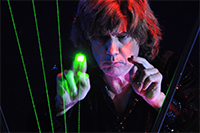For this project I designed an audio based computer game. The player controls the environment with their voice. The Pure Data patch that I wrote is able to distinguish between various vocal sounds.
- SSSSSSSS
- ZZZZZZZZ
- Open vowels
- Hard constanants
These four sounds were used to drive an external physical model of a D.C. motor.
Saying ‘ssss’ or ‘zzzz’ is effectively putting your foot on the gas, say ‘ka’ or ‘pa’ changes up a gear. ‘Aaaah’ turns on reverb and a ping ping delay to simulate other traffic, and, for the icing on the cake, ‘sssss’ switches on a randomly sweeping notch filter, the center frequency of which jumps further, with increased time intervals, the louder the input voice. This has the effect of making the motor sound like a speeding boat. ‘Zzzzz’ switches off the notch filter, and engages a three tap dynamic chorus effect, again controlled by amplitude. This makes the motor sound like a plane.
Despite making people look quite silly, it proves to be quite an addictive waste of time.


 Synthesizer interfaces using laser projection are nothing new. Jean Michelle Jarre was famous for playing around with such devices back in the eighties when I was a kid. Lenovo are not the first tech company to play around with interactive projected control surfaces either. This review (below) would suggest that they have not cracked it. But I still want one.
Synthesizer interfaces using laser projection are nothing new. Jean Michelle Jarre was famous for playing around with such devices back in the eighties when I was a kid. Lenovo are not the first tech company to play around with interactive projected control surfaces either. This review (below) would suggest that they have not cracked it. But I still want one. Being able to project video or a presentation on a wall from your phone sounds like fun. Being able to flip that around and project a computer keyboard onto the table sounds like even more fun. Being able to project a piano keyboard onto a table top and play some music with tolerably low latency sounds like as much fun as you could have from a mobile device. So I’m going to be watching this market very closely. My next smartphone might not be the S6 edge after all!
Being able to project video or a presentation on a wall from your phone sounds like fun. Being able to flip that around and project a computer keyboard onto the table sounds like even more fun. Being able to project a piano keyboard onto a table top and play some music with tolerably low latency sounds like as much fun as you could have from a mobile device. So I’m going to be watching this market very closely. My next smartphone might not be the S6 edge after all!


